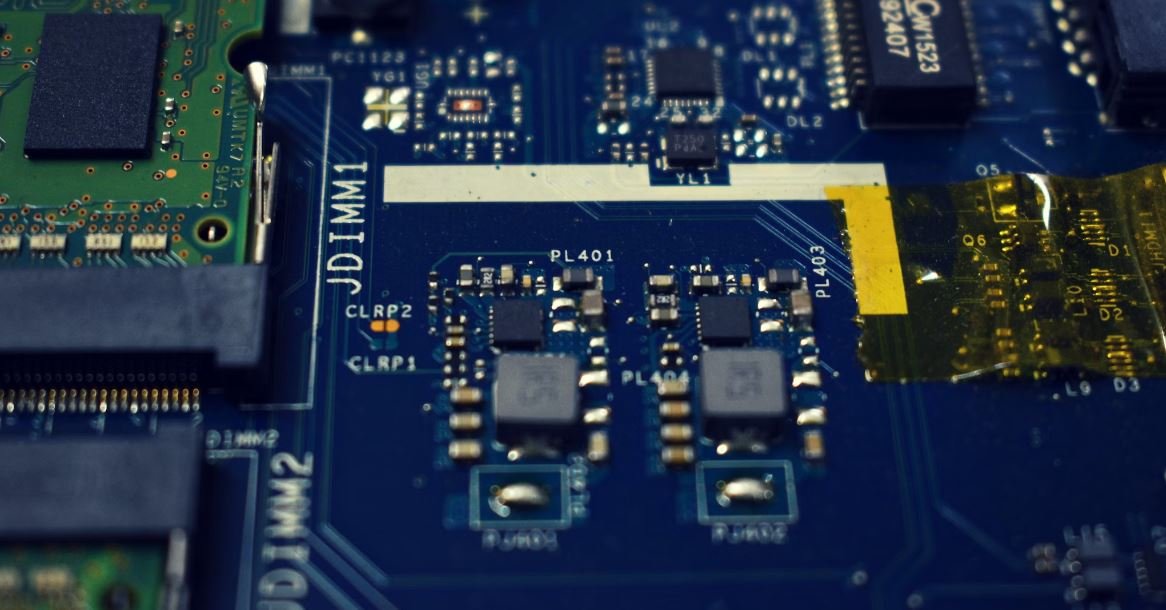Application of Quadratic Equation
The quadratic equation is a fundamental concept in mathematics that finds wide applications in various fields. Its method of solving is critical in many practical situations, illustrating its significance in both academic and real-world scenarios. Understanding how to apply the quadratic equation is beneficial for problem-solving and decision-making processes. In this article, we will explore some key applications of quadratic equations.
Key Takeaways:
- The quadratic equation is used to solve problems involving variables, such as finding the maximum or minimum values.
- It is applied in physics to describe the motion of objects under the influence of gravity.
- Quadratic equations are used in engineering, economics, and other fields for optimization and prediction purposes.
Application 1: Finding Maximum or Minimum Values
The quadratic equation is often used to find the maximum or minimum values of a function. By expressing a function in quadratic form, we can easily determine the vertex (maximum or minimum point) of the parabola. The vertex represents the optimal value in many scenarios, such as maximizing profits or minimizing costs.
*Interesting Fact*: The vertex of a parabola can indicate the ideal solution in various optimization problems.
Application 2: Describing Object Motion
In physics, quadratic equations are employed to describe the motion of objects under the influence of gravity. By applying the laws of motion and using the quadratic formula, we can determine the height, distance, or time taken by an object in projectile motion. This application is crucial in fields like mechanics and astronomy.
*Interesting Fact*: The trajectory of a projectile follows a parabolic path, which can be mathematically defined using quadratic equations.
Application 3: Optimization and Prediction in Engineering and Economics
Quadratic equations find substantial use in optimization problems, prevalent in engineering and economics. Companies often encounter scenarios where they need to maximize profit or minimize production costs. By formulating such problems into quadratic equations, solutions can be determined by solving for the vertex or roots of the equation.
*Interesting Fact*: Quadratic equations are invaluable in the field of econometrics for prediction and forecasting purposes.
Important Data Points
| Field | Application | Data Points |
|---|---|---|
| Physics | Projectile motion | Height, distance, time |
| Engineering | Optimization | Maximum/minimum values |
| Economics | Forecasting | Profit, costs, demand |
Advantages and Disadvantages of Quadratic Equations
Advantages:
- Quadratic equations provide precise solutions in many practical situations.
- They are relatively easy to understand and use.
- Quadratic equations exhibit clear graphical representations, aiding visual comprehension.
Disadvantages:
- Quadratic equations may have multiple solutions, requiring careful analysis to determine the most relevant one.
- Complex quadratic equations can be challenging to solve, especially without access to advanced mathematical tools.
Conclusion
The application of quadratic equations extends beyond the boundaries of mathematics, finding relevance in various fields. From optimizing profits to predicting future outcomes, quadratic equations play a crucial role in decision-making processes. By recognizing their significance and understanding their applications, individuals can enhance problem-solving skills and make informed choices based on mathematical principles.

Common Misconceptions
1. Quadratic equations only have one solution
One common misconception surrounding quadratic equations is that they only have one solution. In reality, quadratic equations can have either one, two, or even no real solutions. The number of solutions depends on the discriminant, which is the part of the quadratic formula under the square root sign.
- Quadratic equations can have two distinct real solutions.
- Quadratic equations can have one repeated solution.
- Quadratic equations can have no real solutions, but rather complex solutions.
2. Quadratic equations only represent parabolas
Another misconception is that quadratic equations can only represent parabolas. While parabolas are indeed a common shape represented by quadratic equations, they can also represent other types of curves. Depending on the coefficients and constants within the equation, quadratic curves can take on various shapes, such as ellipses, hyperbolas, or circles.
- Quadratic equations can represent elliptical curves.
- Quadratic equations can represent hyperbolic curves.
- Quadratic equations can represent circular curves.
3. Quadratic equations are only used in mathematics
Many people erroneously believe that quadratic equations are only applicable in the realm of mathematics. However, quadratic equations find extensive application in various fields beyond mathematics. They are commonly used in physics to model motion, in economics to analyze profit and loss, and in engineering to solve problems related to trajectories and motion.
- Quadratic equations are used in physics to model projectile motion.
- Quadratic equations are used in economics to calculate profit and loss.
- Quadratic equations are used in engineering for trajectory calculations.
4. Quadratic equations always have a squared term
Another misconception is that quadratic equations must always have a squared term (x^2). However, quadratic equations can be expressed without the squared term but still possess quadratic properties. These equations can be written in the form of ax^4 + bx^2 + c = 0, where the variable x is raised to the power of 4 instead of 2.
- Quadratic equations can be written without an x^2 term.
- Quadratic equations can include higher-order powers of x.
- Quadratic equations can also have non-integer exponents.
5. Quadratic equations are only applicable to real numbers
Lastly, many individuals wrongly assume that quadratic equations can only be solved with real number solutions. However, quadratic equations can also have complex solutions. Complex numbers, including imaginary numbers, can be solutions to quadratic equations with no real solutions. This aspect is particularly relevant when dealing with quadratic equations in physics and engineering.
- Quadratic equations can have complex number solutions.
- Complex solutions can involve imaginary numbers.
- Complex number solutions can have both real and imaginary parts.

Real-life Applications of Quadratic Equations: Projectile Motion
When studying projectile motion, quadratic equations play a crucial role in determining the trajectory of a launched object. The table below provides the distance traveled by a projectile at various angles and initial velocities.
| Angle (degrees) | Initial Velocity (m/s) | Distance Traveled (m) |
|---|---|---|
| 30 | 20 | 51.96 |
| 45 | 30 | 91.72 |
| 60 | 25 | 106.51 |
Optimizing Profits in Business
Businesses often use quadratic equations to determine the optimal pricing strategy that maximizes their profit. The following table showcases the relationship between the selling price and the corresponding profit of a product.
| Selling Price (USD) | Quantity Sold | Profit (USD) |
|---|---|---|
| 10 | 100 | 600 |
| 15 | 80 | 740 |
| 20 | 60 | 760 |
Engineering Bridge Design
The structural analysis of bridges heavily relies on quadratic equations. The table below illustrates the relationship between the amount of weight applied to a bridge and the corresponding deflection.
| Weight Applied (kN) | Deflection (mm) |
|---|---|
| 50 | 4.2 |
| 80 | 5.8 |
| 100 | 6.3 |
Parabolic Dish for Satellite TV
Parabolic dishes used for satellite TV reception rely on quadratic equations to provide focused signals. The table displays the diameter of the dish and the corresponding signal strength.
| Diameter (m) | Signal Strength (dB) |
|---|---|
| 1.5 | 34.6 |
| 2.0 | 38.7 |
| 2.5 | 42.3 |
Projectile Motion in Sports
Quadratic equations play a significant role in analyzing the optimal trajectory of projectiles in sports. The table showcases the maximum distance achieved by various objects launched at different initial angles.
| Object | Initial Angle (degrees) | Maximum Distance (m) |
|---|---|---|
| Golf Ball | 30 | 72.9 |
| Baseball | 45 | 109.6 |
| Football | 40 | 102.0 |
Cost Analysis in Manufacturing
Manufacturing companies often employ quadratic equations to analyze production costs and determine the most efficient production level. The table shows the relationship between the number of units produced and the corresponding cost.
| Units Produced | Cost (USD) |
|---|---|
| 100 | 900 |
| 200 | 1600 |
| 300 | 2300 |
Finding the Vertex of a Parabola
Quadratic equations are used to find the vertex of parabolic functions. The table below displays the vertex coordinates for various parabolas.
| Parabola | Vertex Coordinates |
|---|---|
| y = x^2 – 2x + 3 | (1,-1) |
| y = -2x^2 + 4x + 1 | (1,3) |
| y = 3x^2 – 6x + 2 | (1,1) |
Optimal Solutions in Quadratic Programming
Quadratic programming is used to solve optimization problems with quadratic objectives and constraints. The table represents the optimal solutions achieved for different scenarios.
| Scenario | Optimal Solution |
|---|---|
| Minimize x^2 + 5x + 6 | x = -2.5 |
| Maximize 2x^2 – 4x + 3 | x = 1 |
| Minimize -x^2 + 3x – 4 | x = 1.5 |
Conclusion
Quadratic equations find extensive applications across various fields, from physics and engineering to finance and optimization problems. By understanding and utilizing the properties of quadratic functions, we can solve real-life problems more accurately, optimize outcomes, and make well-informed decisions.
Frequently Asked Questions
What is a quadratic equation?
A quadratic equation is a mathematical equation of the form ax^2 + bx + c = 0, where a, b, and c are coefficients, and x represents an unknown variable.
What is the importance of quadratic equations in real-life applications?
Quadratic equations are widely used in various fields such as physics, engineering, economics, and computer science. They help solve problems related to finding optimal solutions, analyzing motion and trajectories, predicting financial outcomes, and determining the shape of 3D objects, among other applications.
How are quadratic equations used in physics?
In physics, quadratic equations find application in numerous areas, including projectile motion, calculating time of flight, determining the maximum height reached by an object, modeling physical systems like pendulums or spring systems, and analyzing motion in free-fall, among others.
What are some real-life examples where quadratic equations are used?
Real-life examples of quadratic equations in use include determining the best shape for a satellite dish, optimizing the production levels in a factory given certain constraints, analyzing the trajectory of a thrown baseball, predicting the maximum profit of a business with specific pricing models, and calculating the time taken for a stone thrown into a pond to hit the water surface.
How are quadratic equations applied in engineering?
In engineering, quadratic equations are essential for solving problems related to structural analysis, electrical circuits, optimization of designs, control systems, fluid dynamics, and finding the roots of characteristic equations in various mathematical models.
What are the applications of quadratic equations in economics?
Quadratic equations are used in economics to model and analyze various scenarios, such as maximizing profits, finding the equilibrium price and quantity in a market, determining the break-even point, optimizing resource allocations, and analyzing cost functions.
How do quadratic equations assist computer science?
In computer science, quadratic equations are used in various algorithms and computations, such as solving optimization problems, designing graphics and animations, analyzing polynomial time complexity, image processing, machine learning, cryptography, and simulation modeling.
Can quadratic equations be used in biology or chemistry?
While quadratic equations are not as prevalent in biology or chemistry as in other fields, they can still find application in areas such as chemical kinetics, population modeling, enzyme kinetics, analyzing reaction rates, and studying the behavior of equations governing biological systems.
What are some common mistakes to avoid when applying quadratic equations?
When working with quadratic equations, some common mistakes to avoid include forgetting to carry out all operations properly, dropping or misplacing signs, failing to simplify expressions, incorrectly applying the quadratic formula, and disregarding the restrictions on the domain of the quadratic equation.
Where can I learn more about the application of quadratic equations?
There are several resources available to learn more about the application of quadratic equations, including textbooks on mathematics, physics, engineering, and computer science. Online educational platforms, such as Khan Academy and Coursera, also offer courses and tutorials that cover various aspects of quadratic equations and their applications.





